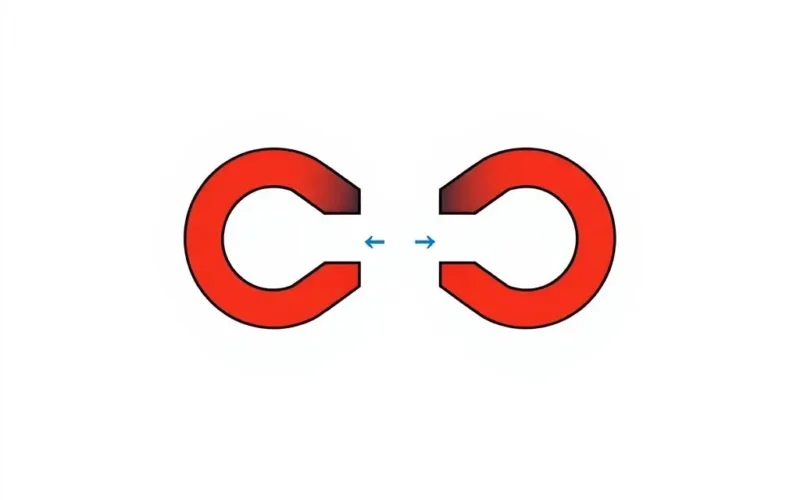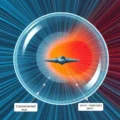Imagine a train, not just rolling along rails, but hovering above them, gliding through the air like something straight out of a sci-fi movie. While it sounds futuristic, this incredible feat is already a reality, thanks to a captivating principle from the world of physics: electromagnetism. These marvels of modern engineering, known as Maglev trains, truly ditch the traditional tracks, suspending themselves on a cushion of magnetic force.
At its core, the concept is deceptively simple, revolving around the fundamental interaction of magnets. Think back to playing with magnets as a child – you felt that invisible force, sometimes pulling them together (attraction) and sometimes pushing them violently apart (repulsion). Maglev trains harness that powerful repulsive force on a massive scale, using it to lift the entire weight of the train clear off the ground.
This isn’t just about sticking a few magnets on the bottom of a train. It’s a highly precise, dynamic system where controlled magnetic fields are constantly adjusted to maintain lift, provide guidance, and propel the train forward. Coils embedded in the track or within the train itself interact with powerful magnets, generating the forces needed for both levitation and propulsion with virtually zero physical contact, which translates to near-zero friction.
It’s a beautiful, real-world demonstration of how electromagnetism can indeed defy gravity and unlock astonishing speeds and efficiency in transportation.
Want a quick, visual rundown of this cool concept? Check out our short video below:
Table of Contents
The Fundamental Principle: Magnets in Action
Before diving into the complexities of Maglev, let’s revisit the basics of magnets. Every magnet has a North (N) pole and a South (S) pole. The fundamental rules are:
Opposite poles attract (N attracts S).
Like poles repel (N repels N, S repels S).
This simple principle of repulsion between like poles is the foundation of Maglev levitation. Imagine placing two bar magnets on a surface, one above the other, with their North poles facing each other. The top magnet won’t rest on the bottom one; it will be pushed upwards and held away by an invisible force.

Now, scale this up. Instead of small permanent magnets, think of incredibly powerful electromagnets – coils of wire through which an electric current is passed to create a magnetic field. The strength of an electromagnet can be easily controlled by varying the current. This controllability is key to Maglev technology.
How Maglev Trains Achieve Levitation
There are two primary technologies used in Maglev systems to achieve this magical float:
1. Electromagnetic Suspension (EMS)
In EMS systems, electromagnets are located on the underside of the train. These magnets are attracted upwards towards ferromagnetic rails on the underside of the track guideway. The attraction force lifts the train.
However, attraction is inherently unstable – a tiny movement up or down can cause the magnets to crash into the rail (if they get too close and the attraction becomes overwhelming) or fall away (if they get too far). To maintain a precise gap (typically around 1-2 cm), sophisticated computer-controlled systems constantly adjust the current flowing through the electromagnets based on feedback from sensors monitoring the gap size. This requires continuous power and precise control.
2. Electrodynamic Suspension (EDS)
EDS systems typically use repulsive forces to achieve levitation. This system often utilizes superconducting magnets on the train and conducting coils on the track. When the train moves, the powerful magnetic fields from the superconducting magnets on board pass over the coils in the track. This movement induces an electric current in the track coils (a principle known as electromagnetic induction).
The induced current in the track coils creates its own magnetic field. According to Lenz’s Law, this induced magnetic field opposes the change that caused it – meaning it repels the magnetic field of the train. This repulsive force is what lifts the train off the track.
A notable feature of EDS systems is that the levitation force is only generated when the train is in motion. The faster the train moves, the stronger the levitation force. This means that EDS trains usually need conventional wheels to roll along the track until they reach a certain lift-off speed (typically around 100-150 km/h). Once sufficient speed is reached, the magnetic repulsion becomes strong enough to lift the train, and the wheels retract.
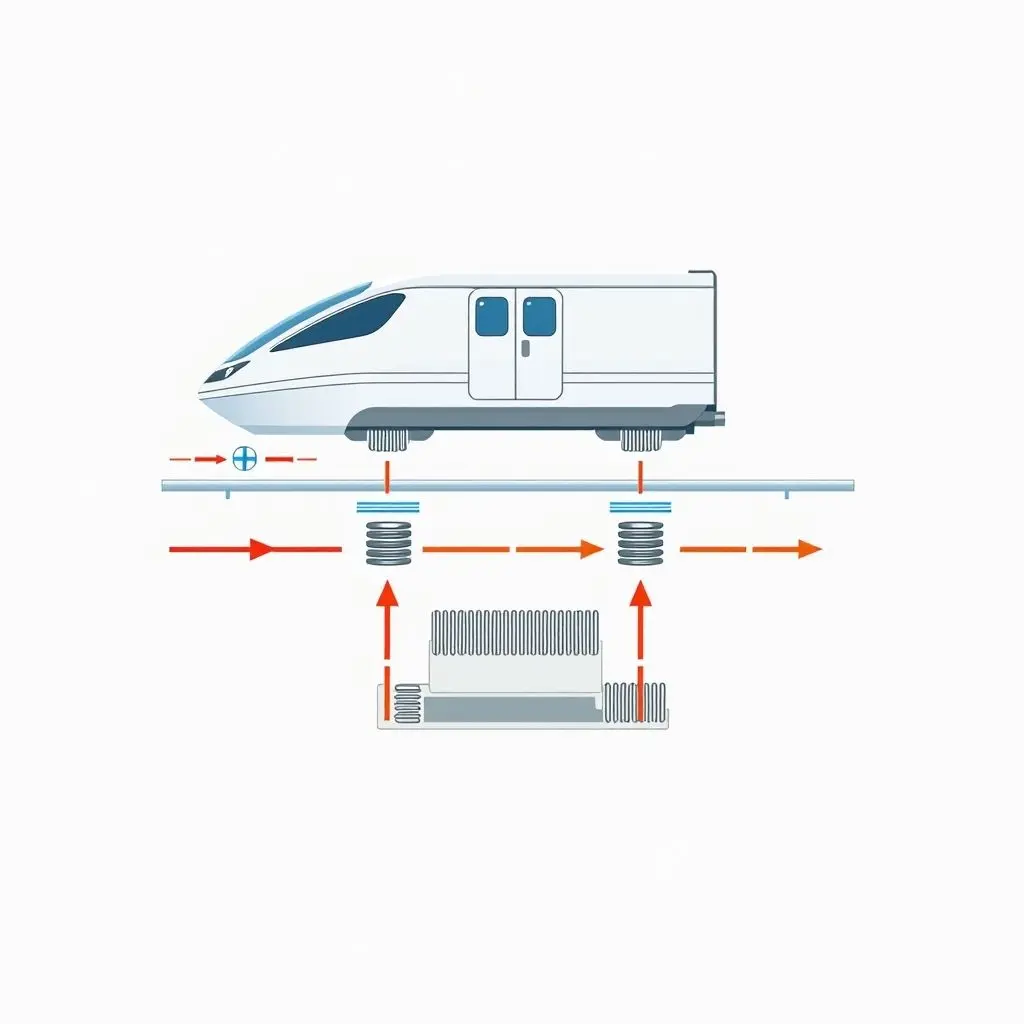
Propulsion and Guidance: Pushing Through the Air
Levitation is only half the story. The train also needs to move forward and stay centered on its path. Maglev systems achieve both using magnetism.
Propulsion via Linear Motor
Maglev trains are typically propelled by a linear motor, which is essentially an electric motor ‘unrolled’. Instead of creating rotational motion, it creates linear motion.
In a common Maglev design, coils are placed along the length of the track. By sending alternating current through these coils, they become electromagnets whose polarity (North or South) switches rapidly and sequentially down the track. The magnets (either permanent, electromagnets, or superconducting) on the train are then either pulled forward by the attracting poles just ahead and pushed forward by the repelling poles just behind.
Imagine a wave of magnetic polarity moving down the track; the train ‘rides’ this wave, being continuously pulled and pushed along. The speed of the train is controlled by the frequency of the alternating current, which dictates how fast this magnetic wave travels along the track.
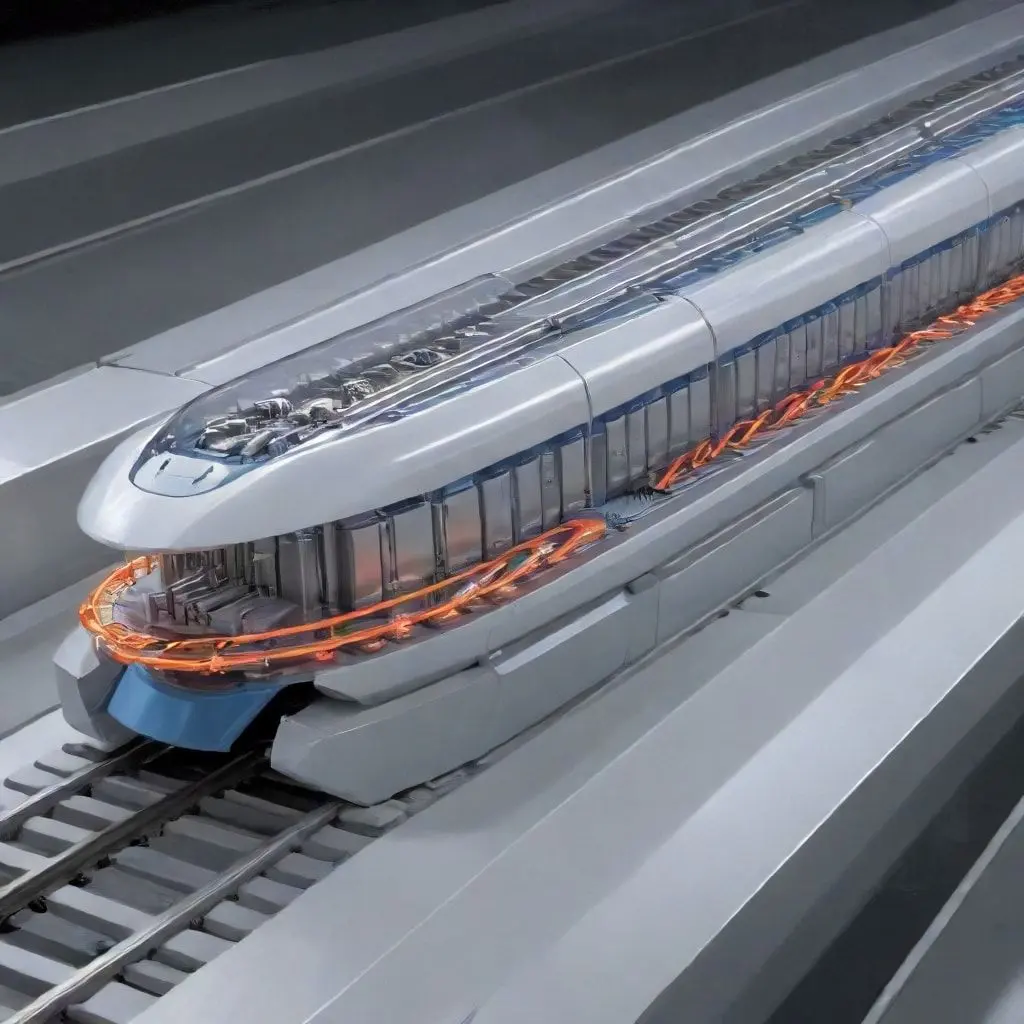
Guidance
Magnetic forces aren’t just used for lifting and propelling; they also keep the train centered on the guideway. In EMS systems, the same magnets used for levitation can also provide lateral guidance by interacting with vertical surfaces on the track. In EDS systems, the interaction between the train’s magnets and track coils can create forces that push the train back towards the center if it drifts too far to the side.
The Benefits of Frictionless Travel
Lifting the train off the track eliminates the major source of friction in traditional rail systems: the contact between the wheels and the rails. This lack of friction offers several significant advantages:
Higher Speeds: Without wheel-rail friction and the mechanical limitations it imposes, Maglev trains can reach incredibly high speeds – well over 500 km/h (300 mph), making them significantly faster than conventional high-speed rail.
Smoother Ride: Gliding on a magnetic cushion provides an exceptionally smooth and quiet ride compared to the rattling and vibrations of steel wheels on steel rails.
Reduced Wear and Tear: With no physical contact, there’s significantly less mechanical wear on both the train and the track, reducing maintenance costs over time.
Steeper Gradients Possible: Linear motor propulsion provides excellent traction, allowing Maglevs to climb steeper inclients than wheeled trains.
Why Aren’t Maglev Trains Everywhere?
Despite their impressive capabilities, Maglev systems are not yet widespread. The primary hurdles include:
High Cost: Building Maglev infrastructure is significantly more expensive than traditional rail, requiring entirely new guideways designed specifically for the magnetic system.
Lack of Interoperability: Maglev trains cannot run on existing conventional rail lines, requiring dedicated networks.
Energy Consumption: While friction is eliminated, levitation and propulsion require substantial electrical energy, particularly during acceleration.
Despite these challenges, Maglev technology represents a fascinating and potentially transformative approach to high-speed ground transportation.
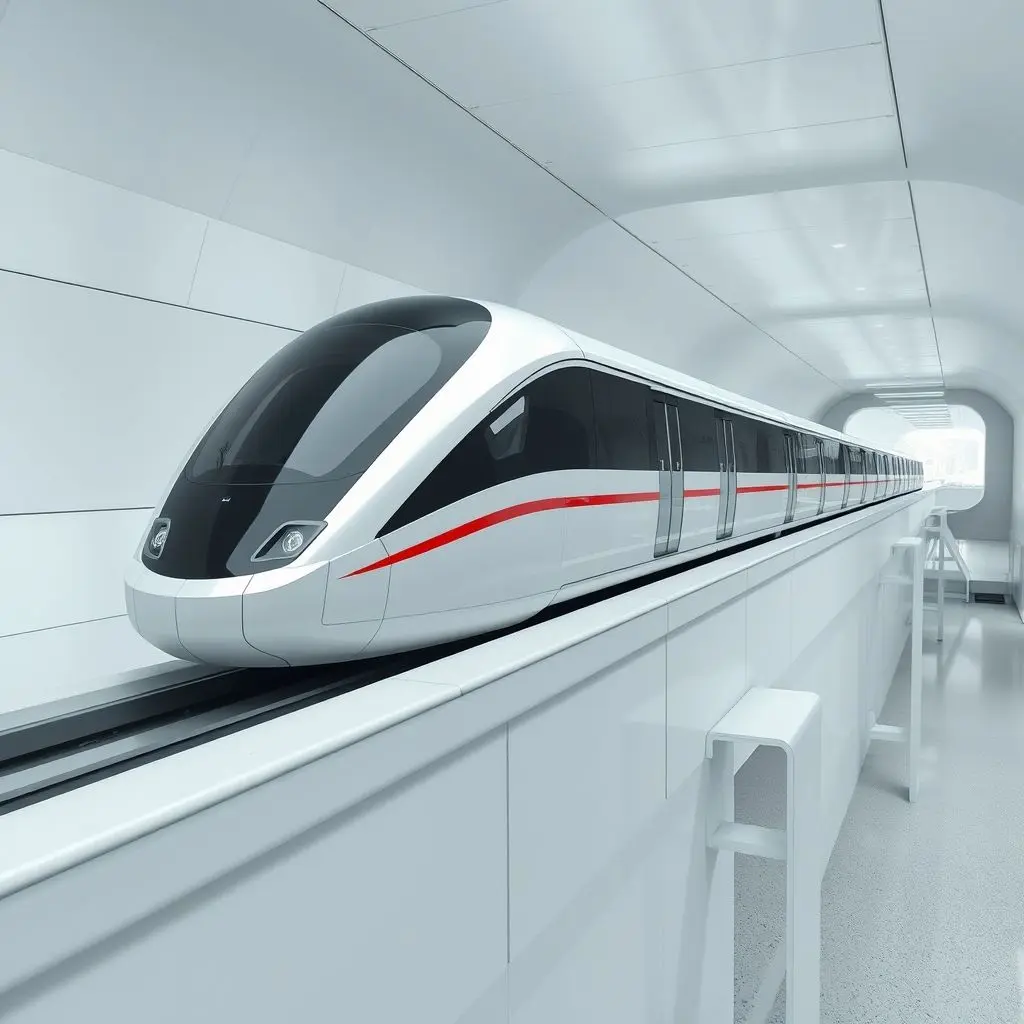
Real-World Examples
While not commonplace, Maglev systems are operational in a few locations:
Shanghai Transrapid (China): One of the most famous examples, connecting Shanghai Pudong International Airport to the Longyang Road station in the city. It uses the EMS system and reaches operational speeds of up to 431 km/h (268 mph).
SCMaglev (Japan): Japan is developing an EDS system capable of reaching speeds exceeding 600 km/h (370 mph) in tests, planned for future intercity lines.
Other smaller systems exist in places like South Korea and China (low-speed urban lines).
Each of these projects pushes the boundaries of what’s possible with magnetic levitation.
Frequently Asked Questions about Maglev Trains
Q: How fast can Maglev trains go?
A: Operational Maglev trains like the Shanghai Transrapid reach speeds over 400 km/h. Experimental trains, like Japan’s SCMaglev, have surpassed 600 km/h, setting world records for rail vehicles.
Q: Are Maglev trains safe?
A: Yes, Maglev trains are designed with extensive safety features. The guidance system prevents derailment, and the lack of physical contact means fewer mechanical failure points related to wheels and tracks. Emergency braking systems are also in place.
Q: Why aren’t Maglev trains used more widely?
A: The primary reasons are the extremely high construction costs for the dedicated infrastructure and the inability to integrate with existing conventional rail networks.
Q: How much energy do they use?
A: Maglev trains, especially at high speeds, require significant electrical power for both levitation/guidance and propulsion. While they save energy by eliminating rolling friction, the energy cost of levitation itself can be substantial, particularly for EMS systems needing constant power for lift. Efficiency compared to high-speed rail depends on various factors including speed and system design.
Q: Can Maglev trains climb hills?
A: Yes, the linear motor propulsion system provides strong thrust, allowing Maglev trains to handle steeper gradients than conventional trains, which rely on friction between wheel and rail for traction.
Physics Defying Gravity
The existence of Maglev trains is a powerful testament to human ingenuity and our ability to apply fundamental physics principles to solve complex engineering challenges. By mastering the invisible forces of electromagnetism, we’ve found a way to literally lift and move massive vehicles with minimal resistance. It’s a captivating blend of science and technology, offering a glimpse into a future of transportation that is faster, smoother, and perhaps, one day, more widely accessible. These floating giants remind us that sometimes, the most incredible journeys begin by simply conquering gravity.
